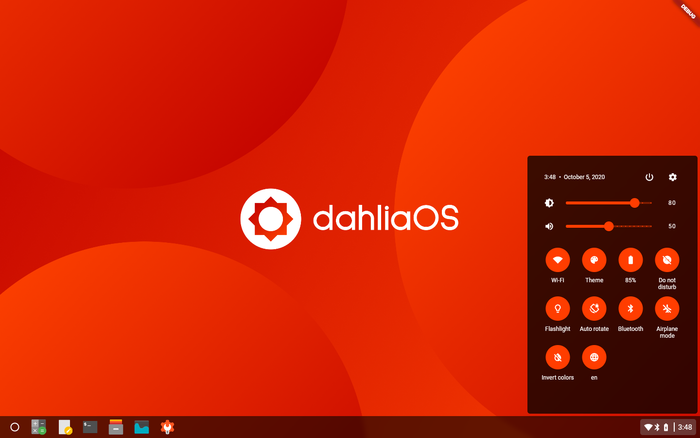
Google's Fuchsia operating system first became known four years ago. Then they wrote that the corporation is developing a project based on the Zircon microkernel. It is a small OS designed for a wide variety of platforms , from smartphones, tablets and personal computers to embedded systems.
The project has been relatively active for several years, and for a couple of years in a row, suggestions have been published on the network that Google is developing it as an alternative to Android. All this time, the OS continued to evolve. For example, in 2017 it was reportedthat the OS received a new user interface, command line capabilities and a few more features. In 2018, Google released a new version of its OS, which could already be tested. But then everything calmed down somehow. And now it became known about a new version of the development of Fuchsia.
This is the dahliaOS project, which has collected all the best from Fuchsia, added technology from GNU / Linux and offers something new. The project is written on the basis of the Dart language and is distributed under the Apache 2.0 license. The developers are preparing two versions of the OS - for systems with UEFI (158 MB) and virtual machines or morally outdated systems.

As for the last option, it is being prepared based on the Zircon microkernel, which was discussed above, and the Fuchsia OS. These builds are already available for platforms such as the Raspberry Pi 4, msm8917 and a handful of other devices.
At the same time, the developers plan to use their own custom Pangolin shell, which is written in the Dart language using the Flutter framework. This skin already supports a tiled layout mode. The basis for this shell is parts of the Capybara project and its own development, including its own windowing system, which is written from scratch. All this can already be tested, however, so far in the form of a web version , which is only compatible with Chrome.
This system runs on systems with the Linux kernel and the Zircon microkernel. The new distribution requires applications that are being developed and are already available . They are written in Dart and Flutter. Now there is a file manager, configurator, text editor, terminal emulator, application for managing virtual machines and containers, multimedia player and application catalog.

In the Pangolin environment, you can run third-party programs, for which the system supports isolated containers. Thanks to them, in the OS environment, you can run any application that is not associated with it. In order for dahliaOS to be able to run on systems with UEFI, the developers have provided a system-recovery application, which makes it possible to automatically download a fresh system image in case of serious problems. You can boot using this image.
